Can you microwave baby food? The short answer is yes! Microwaving can be a safe way to heat baby food. So microwave 4 ounces of solid food in a dish on high power for about 15 seconds.
As a busy parent, you’re always looking for ways to make mealtime easier without compromising on your baby’s health and safety. Microwaving baby food can be a quick and convenient option, but it’s natural to have questions and concerns.
In this article, we’ll explore the ins and outs of microwaving baby food, covering everything from safety considerations to proper techniques.
We’ll help you navigate this common parenting question with confidence, ensuring your little one’s meals are just right every time.
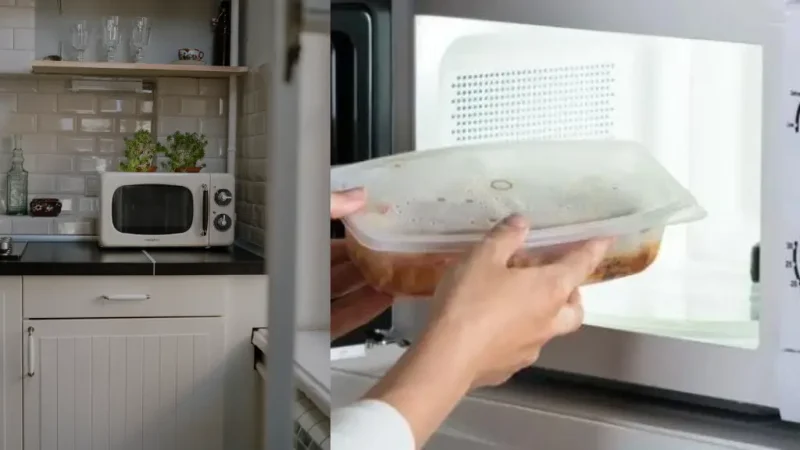
Can you microwave baby food?
Yes, you can safely microwave baby food. The key is to follow proper guidelines: heat 4 ounces of solid food in a microwave-safe dish on high power for about 15 seconds.
Always stir the food well after heating to distribute the heat evenly and check the temperature before serving to avoid hot spots.
While microwaving is convenient for many types of baby food, it’s important to note that breast milk and formula should not be microwaved.
With the right precautions, microwaving can be a quick and safe method to warm your baby’s meals.
Safety Considerations: Putting Your Baby’s Well-being First
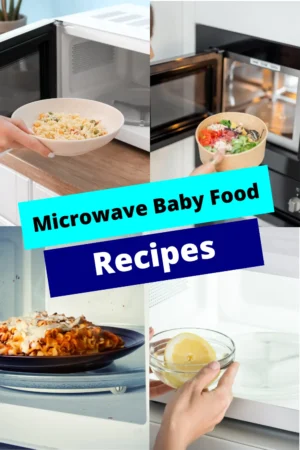
When it comes to microwaving baby food, safety should always be your top priority.
Let’s dive into some crucial considerations to ensure your little one’s meals are heated safely and effectively.
Watch Out for Hot Spots
Microwaves can create uneven heating, leading to dangerous hot spots in baby food.
These pockets of extreme heat can burn your baby’s sensitive mouth. To prevent this:
- Stir thoroughly: Always mix the food well after heating to distribute the heat evenly.
- Let it stand: Allow the food to sit for 30 seconds to 1 minute after heating. This helps even out the temperature.
Temperature Testing is Crucial
Never skip the all-important temperature test. The ideal temperature for baby food is slightly warm or at room temperature. Here’s how to check:
- Use your wrist: Place a small amount of food on the inside of your wrist. It should feel warm, not hot.
- Use a food thermometer: For extra caution, ensure the food is no hotter than 98.6°F (37°C).
Choose the Right Container
Not all containers are created equal when it comes to microwave safety. Here’s what you need to know:
- Use microwave-safe containers: Look for containers specifically labeled as microwave-safe.
- Avoid plastic when possible: If using plastic, ensure it’s BPA-free and microwave-safe to prevent chemical leaching.
- Glass is great: Glass containers are an excellent choice for microwave heating.
Lid Logic
Proper use of lids can make a big difference in safety and heating effectiveness:
- Use vented lids: This allows steam to escape and prevents pressure build-up.
- Don’t seal tightly: If using a regular lid, leave it slightly open to allow steam release.
Avoid Overheating
Overheating can not only create safety hazards but also diminish the nutritional value of the food. Remember:
- Start with short heating times (10-15 seconds) and increase as needed.
- It’s better to underheat and reheat than to overheat.
Be Cautious with Pre-packaged Foods
When using store-bought baby food:
- Transfer to a microwave-safe container: Don’t microwave food directly in the jar or plastic container it came in.
- Remove metal lids: Always take off metal lids before microwaving.
Keep It Clean
A clean microwave is a safe microwave:
- Wipe down regularly: Clean your microwave often to prevent bacteria growth.
- Use microwave-safe cleaning methods: Steam cleaning with lemon water can be effective and safe.
By keeping these safety considerations in mind, you can confidently use your microwave to prepare warm, comforting meals for your baby. Remember, a little extra caution goes a long way in ensuring your baby’s health and safety.
Proper Preparation Techniques: Mastering the Microwave Method
When it comes to microwaving baby food, proper preparation is key to ensuring your little one’s meal is safe and delicious.
Let’s dive into some essential techniques:
1. Choose the Right Container
Always use microwave-safe containers for heating baby food. Glass or microwave-safe plastic are excellent choices.
Avoid using plastic containers that aren’t explicitly labeled as microwave-safe, as they may release harmful chemicals when heated.
2. Portion Control
Heat only the amount of food your baby will eat in one sitting. This prevents waste and reduces the risk of bacterial growth from repeated reheating. A good rule of thumb is to start with 4 ounces of solid food.
3. The 15-Second Rule
As a starting point, microwave 4 ounces of solid food on high power for about 15 seconds. Remember, this is just a guideline – you may need to adjust based on your microwave’s power and the type of food.
4. Stir, Stir, Stir!
Stirring is crucial for even heating. After the initial heating, give the food a good stir to distribute the heat evenly. This helps eliminate hot spots that could burn your baby’s sensitive mouth.
5. Check the Temperature
Always test the temperature before feeding. The best method is to place a small amount on the inside of your wrist. It should feel warm, not hot. If it’s too hot for you, it’s definitely too hot for your baby.
6. Let It Rest
Allow the food to stand for 30 seconds to 1 minute after heating. This allows the temperature to equalize throughout the food, further reducing the risk of hot spots.
7. Use a Lid or Cover
Cover the food while microwaving, but leave a small opening for steam to escape. This helps the food heat more evenly and prevents messy splatters in your microwave.
8. Avoid Overheating
It’s better to underheat and reheat than to overheat. If the food isn’t warm enough after the initial heating, continue to heat in 5-second increments, stirring and checking the temperature each time.
9. Be Cautious with Liquids
If you’re heating pureed foods with high liquid content, be extra careful as liquids can heat unevenly and create hot spots. Stir thoroughly and let stand for a bit longer.
10. Clean As You Go
Wipe down the microwave after each use to prevent buildup of food residue, which can affect heating and potentially contaminate future meals.
Foods to Avoid Microwaving: Keeping Your Little One Safe
While microwaving can be a convenient method for heating many types of baby food, there are certain items that should never see the inside of your microwave.
Let’s explore these no-go foods to ensure your baby’s safety and maintain the nutritional value of their meals.
1. Breast Milk: Nature’s Perfect Food
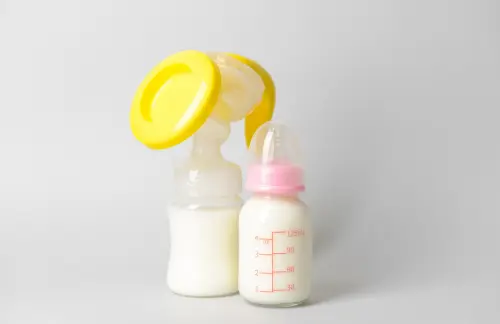
Breast milk is a big no-no when it comes to microwaving. This liquid gold is packed with essential nutrients and antibodies that can be destroyed by the high heat of a microwave.
Moreover, microwaving can create dangerous hot spots that could scald your baby’s sensitive mouth.
Instead, gently warm breast milk by placing the bottle in a bowl of warm water or using a bottle warmer.
2. Formula: Proceed with Caution
Similar to breast milk, infant formula should not be microwaved. The uneven heating can not only create hot spots but also change the composition of the formula, potentially making it less nutritious.
The safest method is to warm formula bottles in a bowl of warm water or use a bottle warmer designed for this purpose.
3. Eggs: A Scrambled Situation

While not a common baby food, it’s worth noting that eggs should never be microwaved in their shells. They can explode, creating a mess and potential safety hazard.
Even scrambled eggs can become rubbery when reheated in the microwave. It’s best to cook eggs fresh each time you want to serve them to your baby.
4. Honey: A Sweet Danger
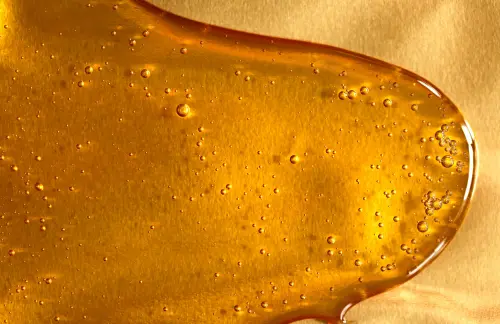
Honey is off-limits for babies under one year old, whether microwaved or not. This is due to the risk of infant botulism.
While this isn’t specifically a microwaving issue, it’s an important reminder for parents introducing solid foods.
5. Frozen Meat: Thaw with Care
If you’re preparing homemade baby food with meat, avoid microwaving frozen meat to thaw it.
This can lead to uneven cooking and potential bacterial growth. Instead, thaw meat safely in the refrigerator or use the defrost setting on your microwave with extreme caution, following up with immediate cooking.
6. Foods in Metal Containers: A Sparking Hazard
This might seem obvious, but it’s worth mentioning: never microwave baby food in metal containers or with metal utensils.
This includes baby food in metal-lined packaging. The metal can cause sparking and potentially start a fire in your microwave.
7. Grapes and Hot Dogs: Choking Hazards
While not directly related to microwaving, it’s important to note that whole grapes and hot dogs are serious choking hazards for babies and young children.
If you do serve these foods (appropriate for older babies and toddlers), always cut them into small, manageable pieces, and avoid microwaving as it can make them even softer and more challenging to handle.
Remember, when it comes to your baby’s food, safety should always be your top priority. When in doubt, opt for alternative heating methods or serve food at room temperature if your baby doesn’t mind. Your little one’s health and well-being are worth the extra effort!
Types of Baby Food Suitable for Microwaving: The Green Light Zone
When it comes to microwaving baby food, not all options are created equal. Let’s explore the types of baby food that are microwave-friendly, making your feeding routine smoother and more convenient.
1. Pureed Fruits and Vegetables
Smooth, single-ingredient purees are excellent candidates for microwave heating. Whether it’s a velvety apple sauce or a creamy carrot puree, these foods heat evenly and maintain their nutritional value when microwaved properly. Some microwave-friendly options include:
- Pureed peas
- Mashed sweet potatoes
- Applesauce
- Pureed squash
Remember to stir well after heating to distribute the warmth evenly and eliminate any hot spots.
2. Grain-Based Baby Foods
Cereals and oatmeal designed for babies are typically safe to microwave. These foods often come in dry form, to which you add liquid before heating. When microwaving:
- Add a little extra liquid, as these foods tend to thicken when heated
- Stir thoroughly halfway through heating
- Let stand for a minute after heating to allow the temperature to stabilize
Popular options include rice cereal, oatmeal, and mixed grain cereals.
3. Homemade Baby Food
If you’re a DIY parent who enjoys making baby food at home, most of your creations can be safely microwaved. This includes:
- Vegetable and fruit purees
- Mashed legumes (like lentils or beans)
- Pureed meats (ensure they’re thoroughly cooked before pureeing)
Always store homemade baby food properly and reheat only what you need for one feeding.
4. Store-Bought Baby Food in Jars or Pouches
Most commercially prepared baby foods are suitable for microwave heating. However, always transfer the food from the original container to a microwave-safe dish before heating.
This ensures even heating and prevents potential chemical leaching from packaging not designed for microwave use.
5. Mixed Ingredient Baby Foods
As your baby grows, they may start enjoying foods with multiple ingredients. Many of these are microwave-friendly:
- Vegetable and fruit medleys
- Pureed meals with meat and vegetables
- Grain-based meals with added fruits or vegetables
Be extra vigilant about stirring and checking the temperature of mixed foods, as different ingredients can heat at varying rates.
6. Thicker Purees and Mashes
As your baby transitions to more textured foods, you’ll find that many of these can still be microwaved:
- Mashed bananas
- Chunky applesauce
- Mashed avocado
Heat these foods in short bursts, stirring frequently to ensure even warming.
Remember, while these foods are generally microwave-safe, always use your judgment and follow safety guidelines.
Check the temperature before serving, and when in doubt, opt for alternative heating methods.
By knowing which foods are microwave-friendly, you can save time without compromising on your baby’s safety or the nutritional value of their meals.
Cleaning and Maintenance: Keeping Your Microwave Baby-Food-Ready
When it comes to preparing your little one’s meals, a clean microwave isn’t just about aesthetics—it’s a crucial part of food safety.
Let’s dive into how to keep your microwave spick and span for all those baby food heating sessions!
1. Daily Quick Clean
After each use, give your microwave a quick wipe-down. This simple habit can prevent stubborn stains and odors.
Quick Clean Recipe:
- Mix equal parts water and white vinegar in a spray bottle
- Spritz the interior and wipe with a soft cloth
2. Weekly Deep Clean
Once a week, treat your microwave to a thorough cleaning session. This helps maintain optimal performance and hygiene.
Deep Clean Method:
- Place a microwave-safe bowl with 1 cup water and a few lemon slices inside
- Microwave on high for 3-5 minutes
- Let it sit for 5 minutes (steam will loosen grime)
- Wipe down with a soft cloth
3. Tackling Tough Stains
Baby food can sometimes leave stubborn marks.
Here’s how to deal with them:
- For dried-on splatters: Place a damp paper towel over the spot and microwave for 30 seconds. The steam will soften the stain for easy wiping.
- For odors: Leave a bowl of baking soda in the microwave overnight (don’t turn it on!)
4. Maintenance Checks
Regular checks can prevent issues that might affect your baby’s food safety.
| What to Check | How Often | Why It’s Important |
|---|---|---|
| Door seal | Monthly | Prevents microwave energy leakage |
| Turntable | Weekly | Ensures even heating of baby food |
| Interior light | Monthly | Helps you monitor food while heating |
| Exterior vents | Monthly | Prevents overheating |
5. Safe Cleaning Products
When cleaning your microwave, stick to baby-safe, non-toxic options:
- Best choices: Vinegar, lemon juice, baking soda
- Avoid: Harsh chemicals, abrasive scrubbers
6. Microwave Hygiene Habits
Develop these habits to keep your microwave consistently clean:
- Cover foods when heating to prevent splatters
- Clean spills immediately to prevent staining
- Leave the door open for a few minutes after use to air out
Remember, a clean microwave is your ally in preparing safe, warm meals for your little one. By following these cleaning and maintenance tips, you’ll ensure that your microwave is always ready for its next baby food heating session.
Alternatives to microwaving:
While microwaving is convenient, there are other safe ways to warm baby food:
- Stovetop method: Place food in a heat-safe bowl within a pot of simmering water. Stir occasionally until warm.
- Bottle warmers: Not just for bottles! Many can warm small containers of baby food too.
- Room temperature: Some babies don’t mind cool food. Try serving it straight from the fridge.
- Hot water bath: Place the food container in a bowl of hot water for a few minutes. Remember to stir and test the temperature.
- Thermos method: For on-the-go feeding, pre-warm food in a thermos with hot water.
These alternatives can be gentler on nutrients and ensure more even heating. Choose the method that works best for you and your baby!
5 Tips for Even Heating: Mastering the Art of Perfectly Warmed Baby Food
When it comes to microwaving baby food, achieving even heating is crucial for your little one’s safety and enjoyment.
Here are five expert tips to ensure your baby’s meal is warmed to perfection:
1. Use a Microwave-Safe Plate or Bowl
Spread the food out on a microwave-safe plate or shallow bowl. This increases the surface area, promoting more even heating. Remember, a thin layer heats more uniformly than a thick pile of food.
2. Stir, Stir, and Stir Again
The golden rule of microwaving baby food: stir frequently. Stop the microwave halfway through the heating process and give the food a good stir.
This helps distribute the heat evenly and breaks up any potential hot spots. For best results, stir again just before serving.
3. Use the Right Power Setting
Lower power for longer times is the secret to even heating. Instead of blasting the food on high power, try using a medium or low setting for a slightly longer duration.
This gentle heating approach helps prevent overheating and ensures a more consistent temperature throughout.
4. Rotate for Even Exposure
If your microwave doesn’t have a turntable, manually rotate the dish during heating. Turn the plate a quarter turn halfway through the heating time to ensure all areas receive equal exposure to the microwaves.
5. Let It Rest
After microwaving, let the food stand for 30 seconds to a minute. This resting period allows the heat to distribute more evenly throughout the food. It’s also a perfect time to give it one final stir before testing the temperature.
Bonus Tip: The Multi-Spot Test
Before serving, test the temperature in multiple spots. Don’t just check the center – test the edges and different areas of the food to ensure there are no surprise hot spots that could harm your baby’s sensitive mouth.
By following these tips, you’ll become a pro at evenly heating your baby’s food in the microwave. Remember, safety first – always do a final temperature check on your wrist before feeding your little one.
Certainly! I’ll expand on the “Storage and reheating guidelines” subheading for your blog post on microwaving baby food. I’ll include a detailed table and use bold and highlighting for emphasis.
Storage and Reheating Guidelines: Keeping Baby Food Safe and Fresh
Proper storage and reheating are crucial aspects of baby food safety. As parents, we often prepare food in batches to save time, but it’s essential to know how to store and reheat these meals correctly.
Let’s dive into the details with this comprehensive guide:
| Food Type | Refrigerator Storage | Freezer Storage | Reheating Method | Special Notes |
|---|---|---|---|---|
| Pureed fruits and vegetables | 3-4 days | 3-4 months | Microwave or stovetop | Stir well after reheating to distribute heat evenly |
| Mashed or chunky fruits and vegetables | 2-3 days | 2-3 months | Microwave or stovetop | May need additional liquid when reheating |
| Meats and poultry | 1-2 days | 1-2 months | Stovetop preferred | Check internal temperature reaches 165°F (74°C) |
| Mixed dishes with meat | 1-2 days | 1-2 months | Stovetop preferred | Ensure all components are heated thoroughly |
| Homemade baby cereals | 3-4 days | 3-4 months | Microwave or stovetop | Add extra liquid as cereals thicken when cooled |
| Breast milk | 3-5 days | 6-12 months | Warm water bath only | Never microwave breast milk |
| Formula | 24 hours | Do not freeze | Warm water bath | Discard any unused formula after feeding |
Key Points to Remember:
- Temperature Check: Always test the temperature of reheated food before serving. It should be lukewarm, not hot.
- Microwave Safety: When using a microwave, stir food thoroughly and let it stand for 30 seconds before testing the temperature. This allows heat to distribute evenly.
- Freezing Tips: Freeze baby food in small portions using ice cube trays or small containers. Label with the date and type of food.
- Thawing Method: Thaw frozen baby food in the refrigerator overnight, never at room temperature. Use thawed food within 48 hours.
- Single-Serving Rule: Only heat the amount of food you plan to serve. Never reheat leftovers that have already been warmed once.
- Storage Containers: Use clean, airtight containers for storing baby food in the refrigerator or freezer.
- The “Two-Hour Rule”: Discard any baby food left out at room temperature for more than two hours.
- When in Doubt, Throw it Out: If you’re unsure about the safety of stored baby food, it’s always better to err on the side of caution and discard it.
Remember, these guidelines are general recommendations. Always consult with your pediatrician for specific advice tailored to your baby’s needs.
By following these storage and reheating guidelines, you can ensure that your baby’s food remains safe, nutritious, and ready for those precious mealtimes!
Bottom Line: Safe Microwaving for Happy, Healthy Babies
Yes, you can microwave baby food safely, but it’s crucial to do it right. Remember the golden rule: heat 4 ounces of solid food for about 15 seconds on high.
Always stir well and check the temperature before serving. While microwaving is convenient, it’s not suitable for all baby foods – avoid microwaving breast milk or formula.
Safety should always be your top priority. Use microwave-safe containers, heat in short bursts, and let the food stand for a minute after heating. Don’t forget to keep your microwave clean to prevent bacteria growth.
Ultimately, microwaving is just one option among many for preparing baby food. Whether you choose to microwave, use the stovetop, or serve food at room temperature, the most important thing is that your baby is well-fed and happy.
Trust your instincts, follow safety guidelines, and enjoy this exciting stage of your baby’s culinary journey!
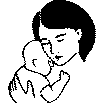
Pingback: Step-by-Step Guide to Making Vanilla Custard Baby Food at Home
Pingback: Baby Food Chart by Age: A Simple Guide for New Parents - Baby Care Corner